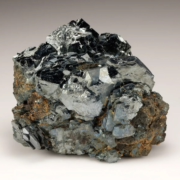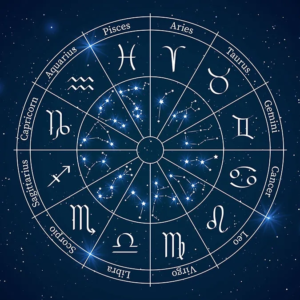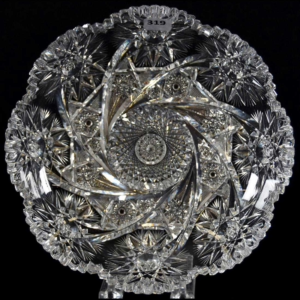Hematite Stone – Properties, Benefits & Virtues
The powers of hematite stone include helPing to confidence and stay present, as well as protection against negative influences. It also helps to calm down any excesses one may have. If you’d like to find out more about this stone and its virtues, read on.
HEMATITE CHARACTERISTICS
- Chakra: Root.
- Properties: Opportunities, Strength, Balance, Clarity, Meditation, Grounding, Concentration, Chakra Alignment, Polarity Balancing, Manifestation, Action, Mental Enhancement, Transmutation of Negative Energies, Organization, Channeling and Grounding of Higher Vibrations.
- Astrology: Planet Mars.
- Zodiac: Aries, Aquarius.
- Elements: Earth.
- Colors: Gray, Metallic.
- Hardness: 5,6.
- Chemical Formula: Fe2O3
HEMATITE STONE – ITS HISTORY
The Latin name for hematite stone is “haematites”, and it’s commonly called hematitogelite, oligiste, micaceous iron or anhydroferrite. Homo saPiens used hematite during the Upper Paleolithic to make red Pigment for cave paintings.
A little later, in ancient Egypt, hematite was mainly used to alleviate blood-related disorders, as the stone itself had the unique property of being the same color as blood. When it came into contact with water, it turned it red. The Egyptians saw this as a way of stimulating greater blood production. At the time, the stone was also used to create cosmetics such as lipstick and blush.
Hematite is a type of iron ore that is frequently used in the production of steel, cast iron and many other alloys. It is also often used in drilling, as well as in the design of heavy concrete structures, such as radiation shields and counterweights. Hematite also plays an important role in jewelry design, for example in hematite necklaces or hematite bracelets.
HEMATITE STONE – ITS ORIGIN AND COMPOSITION
Hematite stone is composed of iron oxide, manganese, titanium and aluminum. Part of the corundum and hematite family, hematite generally has a crystalline structure and is black with silver-gray streaks. You can find it in its raw state in high mountains or in caves formed by centuries of exposure to heat.
The main sources of hematite are Brazil, France and Italy, but it is also found on the planet Mars. In 2004, a sphere composed entirely of raw hematite was discovered on Mars, raising the possibility that water may have been present on the planet – water is essential to the formation of this mineral.

HEMATITE STONE – VERTIES AND PROPERTIES
The hematite stone in lithotherapy has a very strong energy that makes it capable of anchoring, protecting and balancing body and mind. It is rather yang-oriented, so it harmonizes the meridians while bringing harmony to the yin.
HEMATITE ON THE PSYCHOLOGICAL LEVEL
Hematite stone is known for its psychological benefits and can help with lithotherapy, i.e. the treatment of illnesses with stones. Hematite stone is said to be useful for shy women, as it helps them gain respect and boosts their self-confidence. More generally, this stone can help people communicate more easily, concentrate better and consolidate their thoughts.
Hematite stone can improve memory and concentration, enabling you to focus your thoughts on survival instincts and basic needs.
If you’re interested in the benefits of this stone, you can find it as jewelry in hematite bracelet, hematite necklace, or simply in natural hematite stones.

HEMATITE ON THE PHYSICAL LEVEL
Hematite has many benefits on the physical level. In lithotherapy, it is known to help regulate and consolidate blood flow in the body. In addition, this natural stone helps to harmonize body heat according to the needs of the physical plane. This stone has great natural properties, one of which is to dispel negativity. Hematite evacuates bad energy and protects the body envelope, restoring inner peace. Hematite works primarily on the sacral and root chakras.
Hematite stone has many properties and virtues that make it beneficial for lithotherapy. For example, it can help combat excess and various addictions. If you wear a hematite pendant in direct contact with your skin, it can purify your blood and help regenerate tissues. In addition, hematite contributes to the formation of red blood cells and the storage of iron.
WHERE DOES THE NAME HEMATITE COME FROM?

The name “hematite” comes from the ancient Greek “haimatites lithos”, meaning “blood stone”. This name was given to the stone because of its dark red color, reminiscent of blood. Hematite is a dark gray to black stone that contains iron oxide and is often used in jewelry and lithotherapy for its energetic and healing properties.
WHICH CHAKRA DOES HEMATITE ACT ON?

In lithotherapy, hematite is often used to work on the root chakra, also known as the first chakra. This chakra is located at the base of the sPine and is associated with stability, security, survival, grounding and anchoring.
Hematite is considered a grounding stone that can help rebalance the root chakra by providing stabilizing energy and helPing strengthen the connection to the earth. It can also help improve blood circulation, relieve joint and muscle pain, and promote mental clarity.
HEMATITE AND FENG SHUI

Hematite is a popular stone in Feng Shui because it is associated with the element Earth and the color red, both of which are considered beneficial for the energetic balance of a space.
In Feng Shui, hematite is often used for its protective and purifying properties. It is often placed in areas of the home in need of purification, such as the bedroom, bathroom or kitchen.
Hematite is also used for its ability to anchor and stabilize energy. It is therefore often used in spaces where a sense of stability is desired, such as workspaces or meditation areas.
In addition to its purifying and stabilizing properties, hematite is also known for its ability to promote self-confidence and concentration. It can therefore be useful in study or work spaces, or for anyone looking to improve their concentration and confidence.
WHICH ASTROLOGICAL SIGN IS ASSOCIATED WITH HEMATITE?

In astrology, hematite is associated primarily with the zodiac signs of Aries and ScorPio.
Aries is a fire sign that is often considered impulsive and energetic. Hematite is beneficial for people born under this sign as it can help channel their energy and give them better focus.
ScorPio is a water sign associated with passion and emotional intensity. Hematite is beneficial for people born under this sign as it can help stabilize their emotions and give them a better ability to make clear, logical decisions.
WHICH PLANET IS ASSOCIATED WITH THE HEMATITE STONE?

In astrology, hematite is mainly associated with the planet Mars. Mars is the planet of action, strength, energy and ambition. Hematite is also associated with these same qualities, making it a beneficial stone to help increase physical strength, self-confidence, motivation and stamina.
In addition, hematite is also associated with the planet Saturn, which is associated with stability, structure and discipline. This may help explain why hematite is often used in Feng Shui to help stabilize and anchor energy in a space.
WHICH GOD IS ASSOCIATED WITH THE HEMATITE STONE?

In Greek mythology, there is no god specifically associated with the hematite stone. However, in other traditions and cultures, the hematite stone has been associated with various gods and goddesses.
For example, in Native American tradition, the hematite stone is associated with the goddess Mother Earth, who is considered the guardian of nature and life. In Chinese tradition, hematite stone is associated with the god of war, Guan Yu, who is considered a symbol of courage and strength. In Egyptian tradition, hematite stone was used to represent the sun god, Ra, and was considered a protective stone that could help ward off negative forces.
HOW DO YOU KNOW IF IT’S A TRUE HEMATITE?
There are several things to consider when deciding whether a stone is natural hematite or not. Here are a few tips to help you determine whether a stone is real hematite or not:
- Color: Natural hematite has a metallic gray or dark black color. If the stone is a different color or has colored flecks, it is likely not natural hematite.
- Density: Hematite is a heavy, dense stone. If the stone is light or less dense than you would expect, this could be a sign that it is not natural hematite.
- Luster: Natural hematite has a brilliant, metallic luster. If the stone has a dull or matte luster, this could indicate that it is not natural hematite.
- The scratch: You can make a small scratch on the stone with a knife blade or other hard stone. If the scratch is red, it could be a sign that it’s an imitation or artificially colored stone. If the scratch is gray or black, it suggests that the stone is probably natural hematite.
- Magnetic reactivity: hematite is magnetic, so if the stone is attracted by a magnet, this may indicate that it’s natural hematite.
IS HEMATITE A PRECIOUS STONE?
Hematite is a semi-precious stone. It is often used in jewelry and is popular for its natural metallic color and brilliance. Hematite is relatively abundant and is mined in many parts of the world, making it less rare and valuable than some other gemstones such as diamond, ruby and sapphire.
WHEN TO WEAR THE HEMATITE STONE?
Hematite stone is often worn for its energetic properties and mental and physical health benefits. Here are some situations in which wearing hematite can be beneficial:
- For protection: hematite stone is often used to protect against negative energies and psychic attacks. It can be worn as a talisman to create a protective barrier around oneself.
- For grounding and stability: Hematite is considered an anchoring stone, which means it can help one connect to the Earth and maintain a sense of emotional stability. It can be useful for those who feel lost or disconnected.
- For strength and courage: Hematite is associated with strength and courage, making it a useful stone for those seeking to build confidence and overcome challenges.
- For healing: Hematite is considered a healing stone, and can be useful for relieving physical pain, improving blood circulation and boosting the immune system.
HEMATITE STONE TRADITION IN ANCIENT TIMES
Hematite has been used for decorative and symbolic purposes since ancient times. Here are a few examples of its use in ancient cultures:
- Ancient Egypt: Hematite was used in ancient Egypt to create jewelry, scarabs and other decorative objects. The Egyptians believed the stone had protective properties and was associated with the god of war, Horus.
- Ancient Greece: The ancient Greeks used hematite to create jewelry, amulets and seals. They believed the stone had healing properties and was associated with the god of war, Ares.
- Ancient Rome: The Romans used hematite to create jewelry and decorative objects. They believed the stone had healing properties and could help stop bleeding.
- Native American culture: Native Americans used hematite to make tools and weapons, as well as decorative objects. They believed the stone had healing properties and could help stop bleeding.
HEMATITE STONE LEGEND AND FOLKLORA
There are many legends and folklore associated with the hematite stone. Here are a few examples:
- In Greek mythology, hematite was associated with the god of war, Ares. It was believed that the stone could enhance the wearer’s courage and strength.
- In Native American tradition, hematite was considered a healing stone and was used to treat blood diseases. It was also believed that the stone could help strengthen willpower and improve concentration.
- In Irish folklore, hematite was associated with fairies and nature sPirits. It was believed that the stone could help protect travelers from the dangers of the forest and foster communication with sPirits.
- In Chinese tradition, hematite was associated with the earth element and yang energy. It was believed that the stone could help build physical strength and improve blood circulation.
HOW TO MEDITATE WITH THE HEMATITE STONE
Meditating with hematite stone is an excellent way to enjoy its energetic and healing benefits. Here are a few simple steps to meditating with hematite stone:
- Find a quiet, comfortable place to sit. Sit comfortably and relax your body.
- Hold the hematite stone in your left or right hand, whichever you prefer.
- Close your eyes and start breathing deeply and slowly. Try to focus on your breathing and the feel of the stone in your hand.
- Visualize a white light emanating from the hematite stone and spreading throughout your body. Imagine this light healing, protecting and filling you with positive energy.
- Stay in this meditative state for as long as you like, focusing on the breath and the feel of the stone in your hand.
- When you’re ready to end the meditation, thank the hematite stone for its energy and healing. Take a few deep, slow breaths to refocus before reopening your eyes.
WHERE TO PLACE HEMATITE IN THE HOME?
Hematite can be placed in different rooms of the house to take advantage of its energetic benefits. Here are some suggested locations:
- In the bedroom: place a hematite stone on your bedside table to help balance the energy in the room and promote restful sleep.
- In the bathroom: place a hematite stone on the edge of the bathtub or on a shelf to help purify the water and eliminate negative energies.
- In the living room: place a hematite stone near the TV or computer to help neutralize electromagnetic energies and reduce stress levels.
- In the kitchen: place a hematite stone on the counter or on a shelf to help strengthen the energy of food and promote a healthy, balanced diet.
WHERE TO PLACE HEMATITIS AT WORK?
Hematite can be an excellent crystal to place in your workplace to help improve concentration, motivation and productivity. Here are some suggested locations for hematite at work:
- On your desk: Place a hematite stone on your desk to help balance the energies in the room and enhance your focus and motivation.
- In your pocket: keep a small hematite stone in your pocket to help reduce stress and maintain a calm, centered state of mind.
- On your chair: place a hematite stone on your chair to help balance your energy and reduce fatigue and stress.
- In the meeting room: place one or more hematite stones on the meeting room table to help improve communication and cooperation between participants.
WHICH ORGAN OF THE HUMAN BODY DOES THE HEMAT STONE ACT ON?
On a physical level, hematite stone is associated with the root chakra (or base chakra), which lies at the base of the sPine. It is often used to help balance the energy of this chakra and strengthen the circulatory system and blood.
In lithotherapy, hematite stone is considered beneficial for several organs and parts of the body, including:
- Blood: hematite is often used to help regulate and purify the blood, as well as to promote blood circulation.
- Liver: hematite is said to help stimulate liver function and eliminate toxins from the body.
- Kidneys: hematite is also associated with the kidneys and can help promote kidney function and eliminate toxins from the body.
- Bones and joints: hematite is often used to help strengthen bones and joints, as well as relieve joint pain.
- The immune system: it is said that hematite can help boost the immune system and strengthen resistance to disease and infection.
HEMATITE STONE SUMMARY
Hematite stone is often used in lithotherapy for its energetic and healing properties. It is considered an anchoring stone that helps one feel connected to the earth and to physical reality. It is also known for its protective and stabilizing properties, which can help calm emotions and boost self-confidence.
On a physical level, hematite stone is used to improve blood circulation, relieve joint and muscle pain, and stimulate the immune system. It is also often used to treat blood-related disorders, such as anemia.
In lithotherapy, hematite stone is often worn as jewelry, or placed on specific areas of the body for healing sessions. It can also be used in meditation or visualization to help calm the mind and feel more grounded in the present moment.
However, it’s important to note that lithotherapy is not recognized by conventional medicine as an effective treatment method, and the information provided here should not be considered medical advice. It is important to consult a qualified health professional for any health problem.


